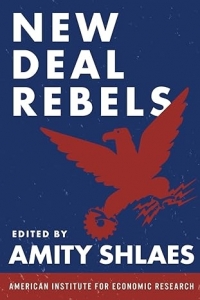"Men's attire was more sensitive to depression than women's, for even the most elemental sense of chivalry recognized the superior importance of fashion for wife and daughter."
-from Amazon:

More articles on 1930s fashion can be read here...
This magazine article from 1935 documented the Federal aid that was made available for America's poorest children. The malnutrition visited upon the boys of America's indigent would render some of them unfit for military service in World War II.
"With nearly one-sixth of the nation's child population in families dependent upon emergency relief, welfare agencies call for a solution of their grave problem." "The problem was laid before the recent National Conference on the 1935 Needs of Children held under the auspices of The Parent's Magazine in New York City. Before them Katherine F. Lenroot, Chief of the United States Children's Bureau, made one of her first public appearances since taking office:"
"...These children have a right to expect that Federal, State, and community relief policies of 1935 will provide more adequately for essential items in the family budget."
Another article about children of the Great Depression can be read here...
"Along with the host of other forgotten items in this historic age of trouble, to be classed with Sumner's forgotten man and Uncle Sam's forgotten Constitution, is the forgotten dollar."
- so saith Edwin Myers of NEW OUTLOOK MAGAZINE. His gripe was typical of most Americans who struggled to get by during the Great Depression - but FDR was not neglectful of the dollar; one of his first acts was to make American exports more attractive abroad - and he devalued the dollar to this end. Much to his credit, exports did indeed increase - but the decreased purchasing power of the dollar domestically contributed to the misery of the American consumer. All the editorial writers quoted in this 1933 article agreed that FDR was the first U.S. President to ever have faced a genuine economic calamity as that which was created by the Great Depression:
"Look at the picture flung into the face of Franklin Roosevelt:"
"Ships are tied up in harbors and their hulls are rotting; freight trains are idle; passenger trains are empty; 11,000,000 people are without work; business is at a standstill; the treasury building is bursting with gold, yet Congress wrestles with a deficit mounting into the billions, the result of wild and extravagant spending; granaries are overflowing with wheat and corn; cotton is a drag on the market, food crops are gigantic and unsalable, yet millions beg for food; mines are shut down; oil industries are engaged in cutthroat competition; farmers are desperate, taking the law into their own hands to prevent foreclosures; factories are idle; industry is paralyzed..." "The other half of California's 200,000 migratory workers are farmers who trekked from the dust bowl area; they found work on farms, but not farming; it's seasonal piecework, like in a mill. Each Oklahoma nomad dreams of a cottage and a cow, but he's just sitting on a barbed wire fence. With the publicity over, the government has forgotten the dust bowl refugees. At Depression depth, a man might make $8 a week; now, $5 is lucky. They are the bitterest folk in America; blood may flow..."
Click here if you would like to read a 1940 article about the the finest movie to ever document the flight of the Okies: "The Grapes of Wrath". "Washington Society, long shackled, kicked the lid off last week, swung into the most dazzling season it has had since the Depression spawned bread lines, and knocked the wealthy back on their heels." "Money is spinning again; hostesses are plotting major campaigns; diamonds and pearls are coming out for renewed display; caviar and terrapin reign supreme once more..."
Click here to read about American high society during the Depression years.
|